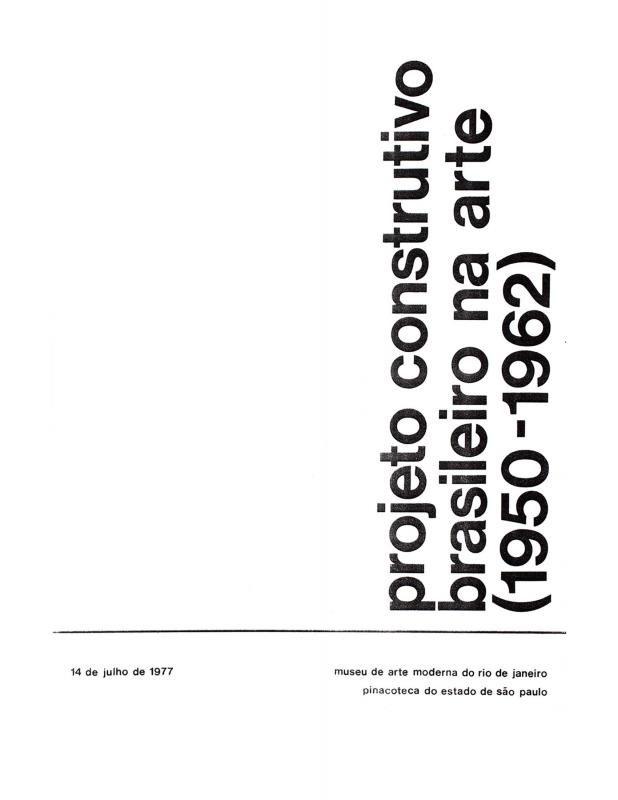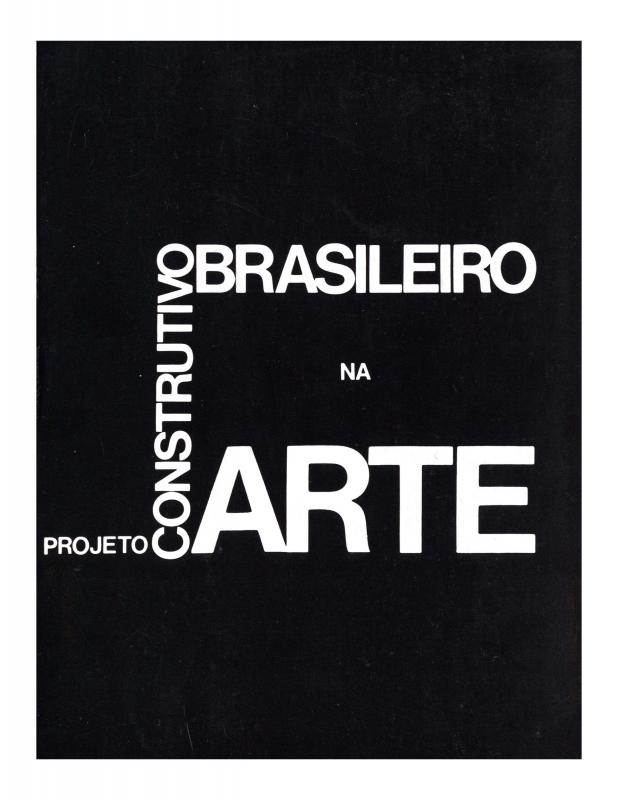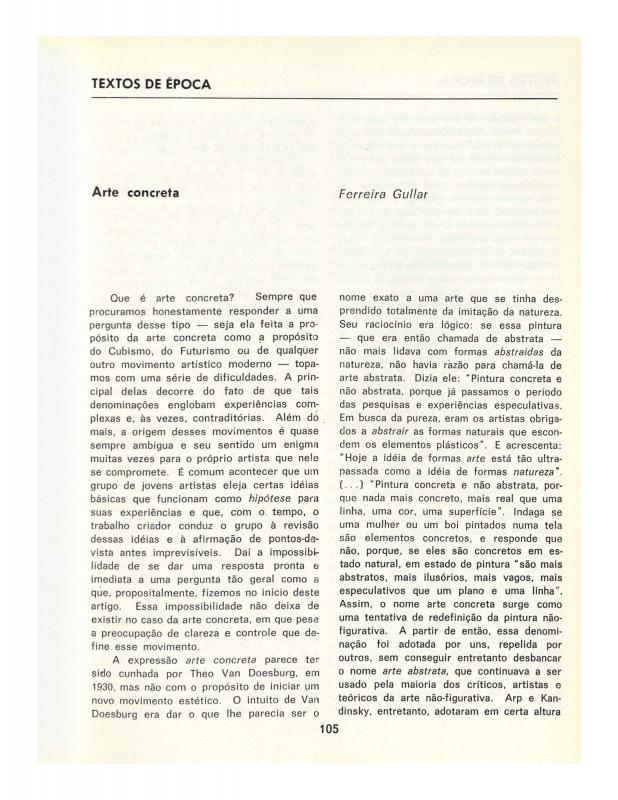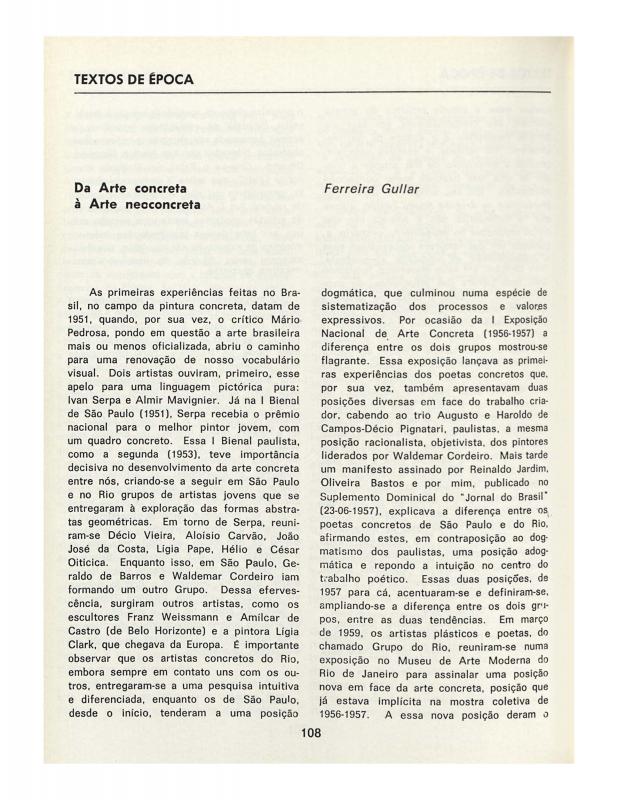Born in Ceará, Ronaldo [Correia de] Brito (b. 1951) is a noted Brazilian critic whose writings have been published in books, magazines, and exhibition catalogues. He contributed to the weekly publication Opinião and founded the magazines Malasartes and Gávea [see the ICAA digital archive (doc. no. 1111305)]. More importantly, he played a vital role in the revaluation of the Constructivist art movements (most particularly regarding the contributions made by Neo-Concrete artists) and their legacy to contemporary Brazilian art. In this essay the author describes the opposing views held by different Concrete art movements as they evolved in São Paulo and Rio de Janeiro (where the prefix “neo” was added to the name). In Brito’s opinion, Concrete art is a “dogmatic phase,” whereas Neo-Concrete art has exploited intense criticism and challenges to carry out its “breakaway or rupture phase.” The former became involved in its implementation; the latter had to address the issue of local adaptation.
[For more on Brito’s work, see: “Neoconcretismo” (doc. no. 1091308); “Análise do circuito” (doc. no. 1111095); “O desequilibrista” (doc. no. 1110616); “Leitura crítica do real” (doc. no. 1110555); and “Trágico moderno” (doc. no. 1110423), among others.]
This essay appeared in Projeto Construtivo Brasileiro na Arte, the catalogue for the exhibition organized in São Paulo by Aracy Amaral (b. 1930) and Lygia Pape (1927–2004). The event was hugely influential in Brazil, prompting an innovative reading of the meaning of the rationalist movements in Brazilian art. The exhibition was presented in 1977 at the Pinacoteca do Estado de São Paulo and, later on, at the MAM-RJ (Museu de Arte Moderna do Rio de Janeiro).
[For more information about this exhibition, see: “Projeto construtivo brasileiro na arte” (doc. no. 1110680) by Pape; “A arquitetura é a grande arte de nosso tempo —1948: Romero Brest em São Paulo” (doc. no. 1314972) by Jorge Romero Brest; “Concretismo/ Neoconcretismo,” by Frederico Morais (doc. no. 1315134); “Arte Concreta” (doc. no. 1315020), “Da arte concreta à arte neoconcreta” (doc. no. 1315036), “Arte neoconcreta, uma contribuição brasileira” (doc. no. 1315052), “Concretos de São Paulo no MAM” (doc. no. 1315102), and “Resposta a Cordeiro” (doc. no. 1315118) by Ferreira Gullar; see also “O problema da educação artística depois da Bauhaus” (doc. no. 1315069) by Tomás Maldonado.]















